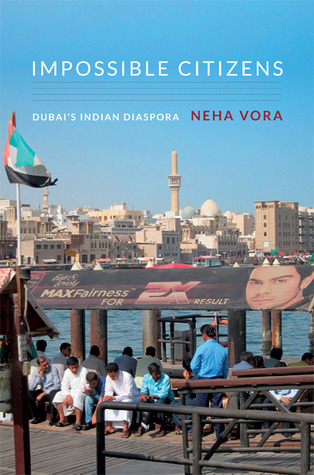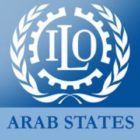

Essential Reading
Full guide here. العربية
Below we highlight the most critical sources for understanding trafficking, forced labor and irregular migration issues in the MENA region.
Human Rights Reporting and News
 Human Rights Watch: HRW has produced multi-lingual reporting on the situation of migrant workers and domestic workers in the MENA region since the 2000s. Reports feature in-depth interviews with workers and analysis of regulations. Their website also features current statements on recent news.
Human Rights Watch: HRW has produced multi-lingual reporting on the situation of migrant workers and domestic workers in the MENA region since the 2000s. Reports feature in-depth interviews with workers and analysis of regulations. Their website also features current statements on recent news.
Key Reports
Working Like a Robot: Abuse of Tanzanian Domestic Workers in Oman and the United Arab Emirates
Without Protection: How the Lebanese Justice System Fails Migrant Domestic Workers
As if I am not Human: Abuses against Asian Domestic Workers in Saudi Arabia
 Amnesty International: Amnesty reports on the situation of workers in the MENA region, particularly construction workers in Qatar. They also publish current news and commentary on trafficking and migration issues.
Amnesty International: Amnesty reports on the situation of workers in the MENA region, particularly construction workers in Qatar. They also publish current news and commentary on trafficking and migration issues.
Key Reports
The Ugly Side of the Beautiful Game: Exploitation of Migrant Workers on a Qatar 2022 World Cup Site
My Sleep is My Break: Exploitation of Domestic Workers in Qatar
 Migrant-Rights.org: Regular reporting and in-depth coverage of trafficking and forced labor issues in the Gulf Cooperation Council (GCC) countries.
Migrant-Rights.org: Regular reporting and in-depth coverage of trafficking and forced labor issues in the Gulf Cooperation Council (GCC) countries.
Key Reports
Kafala as a Business; Kafeel as a Career
Understanding Kafala: An Archaic Law at Cross Purposes with Modern Development
Government and Intergovernmental Research
 International Labour Organization: The ILO publishes in-depth analysis of legislation and regulations affecting migrant workers in the MENA region. Comparisons between countries and their new bilingual glossary on migration are especially useful.
International Labour Organization: The ILO publishes in-depth analysis of legislation and regulations affecting migrant workers in the MENA region. Comparisons between countries and their new bilingual glossary on migration are especially useful.
US Trafficking in Persons Reports: Updated yearly, these reports provide comprehensive analysis and ratings of countries’ efforts to combat trafficking.
Key Reports
Ways Forward in Recruitment of Low-Skilled Migrant Workers in the Asia-Arab States Corridor
Cooperating Out of Isolation: The Case of Migrant Domestic Workers in Lebanon, Jordan and Kuwait
Tricked and Trapped: Human Trafficking in the Middle East
Research and Academia
 GLMM: Gulf Labour Markets and Migration reports are produced by academics on a range of migration issues in the GCC. Their papers and policy briefs clearly outline regulatory frameworks.
GLMM: Gulf Labour Markets and Migration reports are produced by academics on a range of migration issues in the GCC. Their papers and policy briefs clearly outline regulatory frameworks.
Key Reports
Addressing Irregular Migration in the Gulf
Wage Protection Systems and Programmes in the GCC
United Arab Emirates’ Legal Framework of Migration
Dangers of Using Aggregated Data for Understanding Socio-Demographic Realities of the Gulf Region
 Migration-Policy.org: Years of reports on MENA migration corridors, covering topics from recruitment to labor reform.
Migration-Policy.org: Years of reports on MENA migration corridors, covering topics from recruitment to labor reform.
Key Reports
Kenyan Migration to the Gulf Countries: Balancing Economic Interests and Worker Protection
Books and Novels
The readings below are primarily written by migrants and depict the lives of migrants in the GCC. They include fiction and may not be a typical resource for journalists, but their rich storytelling reflects lived experiences and gives readers a unique and essential perspective.
Goat Days by Benyamin. Written by a Bahraini-based Indian migrant, Goat Days journeys through the life of an Indian worker abused in Saudi Arabia. Based on real-life events.
Temporary People by Deepak Unnikrishnan. Fictional stories of workers in the UAE captures the temporariness of the country’s migrant workforce.
 Impossible Citizens by Neha Vora. Ethnographic research on the Indian community in Dubai explores citizenship and belonging amongst a population barred from permanent residency.
Impossible Citizens by Neha Vora. Ethnographic research on the Indian community in Dubai explores citizenship and belonging amongst a population barred from permanent residency.
Bamboo Stalk by Saud Alsanousi. A half-Kuwaiti, half-Filipino’s experiences in Kuwait reveal society’s prejudices and tensions with its migrant workforce.
Migrant Labour in the Persian Gulf by Mehran Kamrava and Zahra Babar. A collection of chapters addressing various aspects of migration in the GCC.
Slave States: The Practice of Kafala in the Gulf Arab Region by Yasin Kakande. Written by a Ugandan journalist who worked in the Middle East for over a decade, Slave States exposes the conditions of migrant workers in the UAE.









